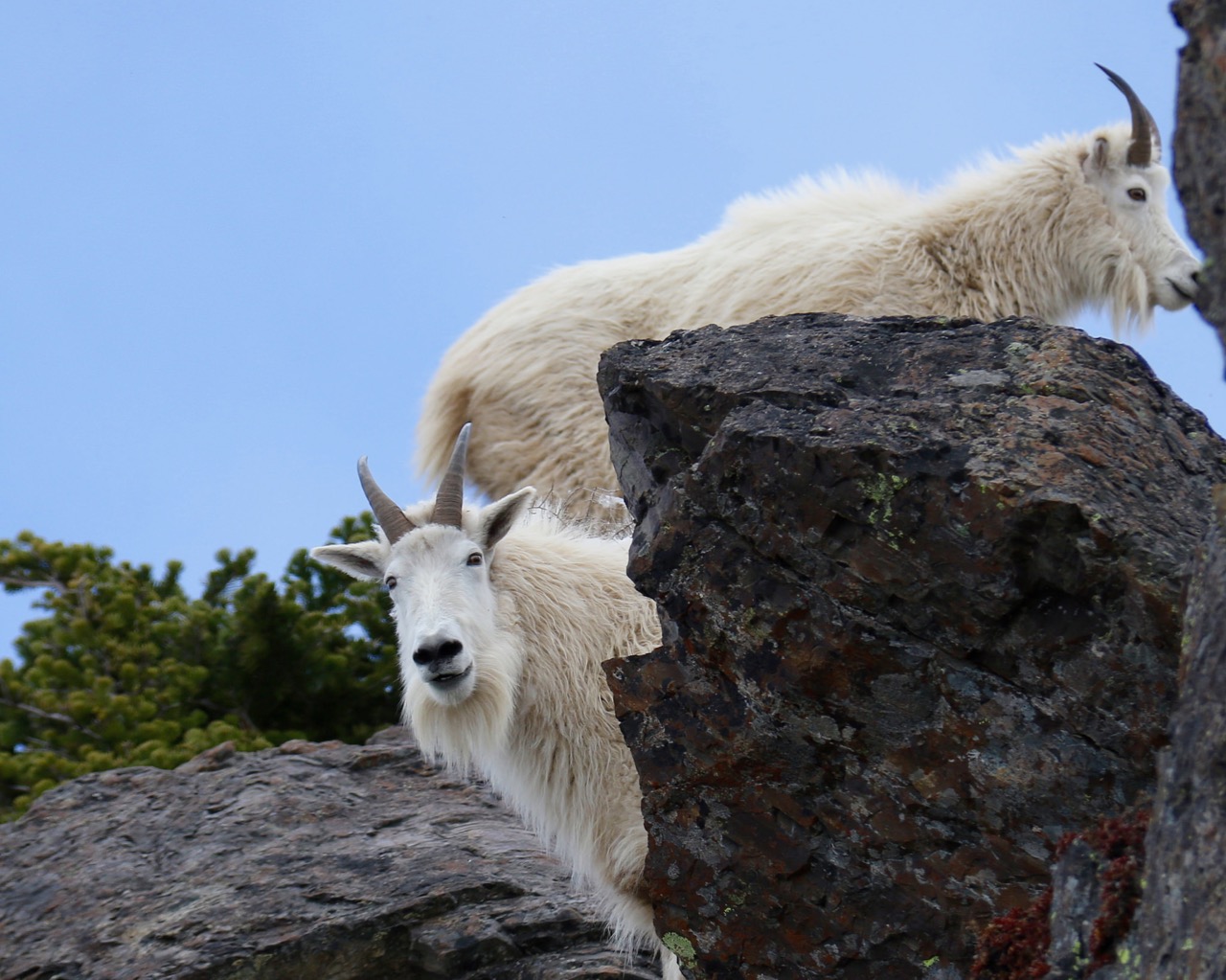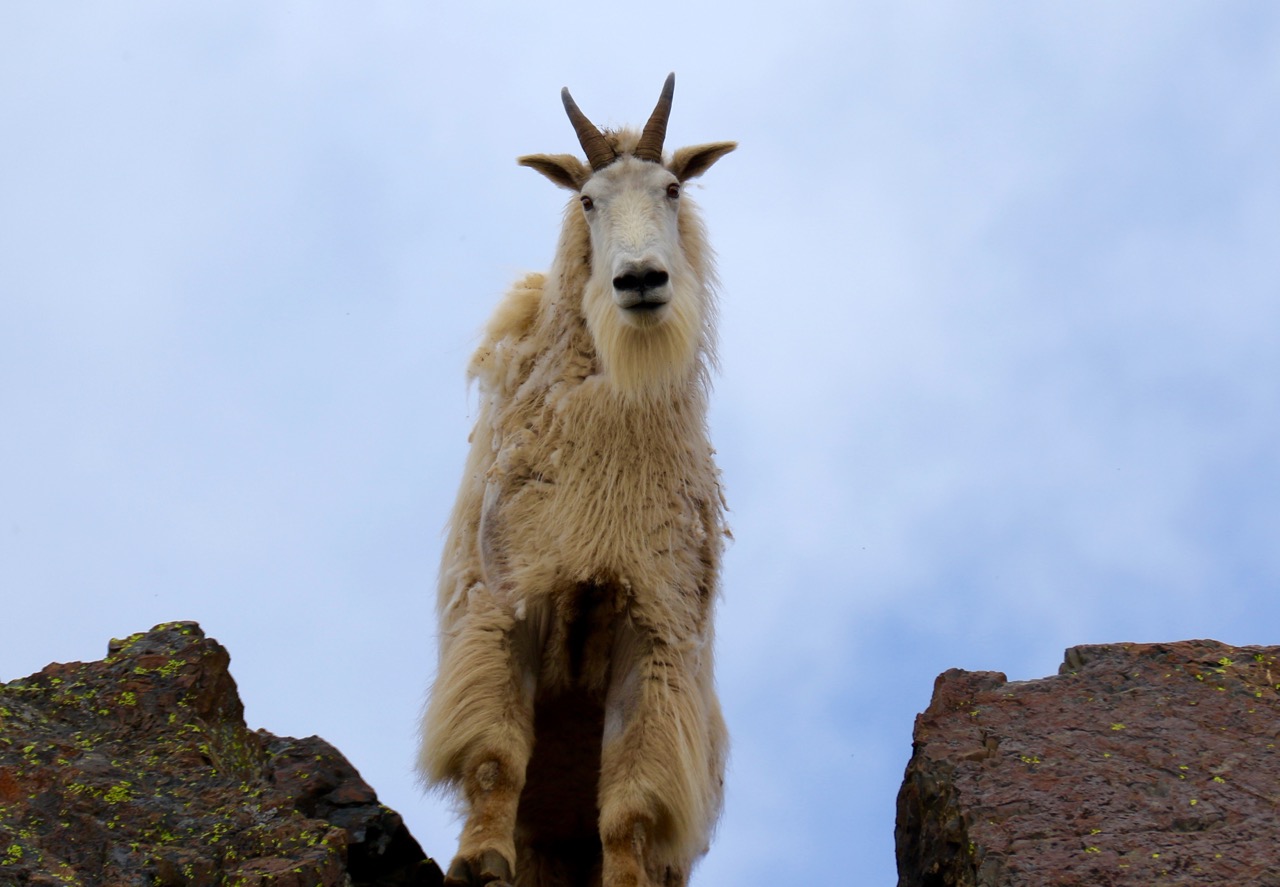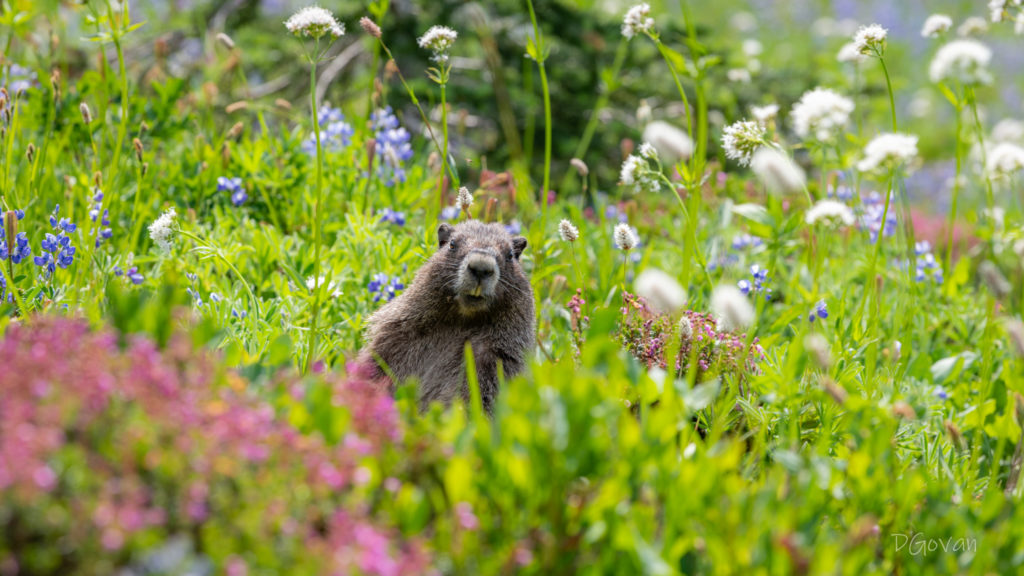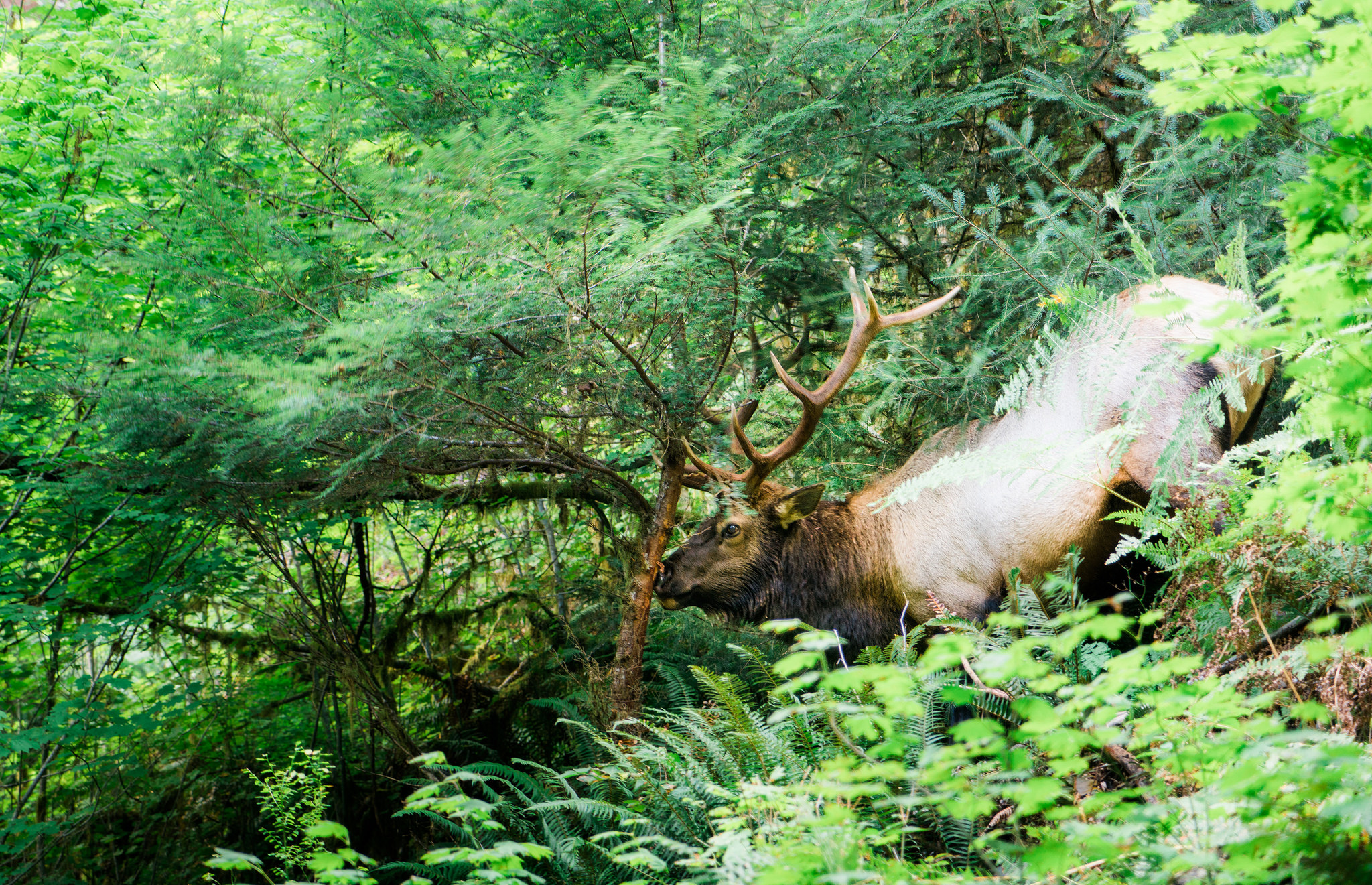Washington State’s tallest mountain, Mount Rainier, is a majestic peak that supports a diverse range of animal life. From cougars to mountain goats, marmots to elk, and sharp-tailed grouse to white-tailed jackrabbits, there are many animals that can be found atop this mountain.
In this article, we will explore seven of the animals that call Mount Rainier home, providing insight into their habitats, behaviors, and adaptations to the alpine environment.
You are reading: Discover 7 Animals Atop Washington State’s Tallest Mountain
Whether you are a nature enthusiast or simply curious about the wildlife of Washington State, this article will offer a fascinating glimpse into the creatures that roam atop the state’s tallest mountain.

7 Animals Atop Washington State’s Tallest Mountain
Cougars
Cougars, also known as mountain lions or pumas, are large, solitary, and secretive cats that are rarely seen in the wild. They are common at Mount Rainier, but visitors are unlikely to encounter them.
Cougars are gray to reddish-tan in color and can weigh between 70-190 pounds. They are powerful animals and can be dangerous if provoked, but they usually avoid confrontation with humans. If you see a cougar, it is important to give it plenty of space so it can get away.
Visitors to Mount Rainier National Park are advised to report all bear and mountain lion sightings to a ranger or call park dispatch at (360) 569-6600.
Mountain goats

Mountain goats are well adapted to living in alpine environments and can be found on the slopes of Mount Rainier. They have thick white coats that help them survive in cold temperatures, and a dense warm undercoat allows them to live comfortably at high elevations even during winter.
In contrast to their shaggy all-white coats, mountain goats have black lips, eyes, noses, and hooves. Their hooves have a hard outer ring with a spongy center that helps them “stick” to rocks, making them nimble climbers that can easily traverse steep rock slopes and cliffs.
Both males and females have slim black horns, with the horns thickening and curling backwards as the goat ages in males. Mountain goats primarily eat grasses in summer, shifting to woody plants and fallen leaves in fall and winter. Mountain goats range between subalpine and alpine regions in the park.
Visitors to Mount Rainier National Park can spot mountain goats on various trails, including the Skyline Trail.
Marmots

Marmots are large ground squirrels that are common in alpine environments and can often be seen sunning themselves on rocks.
The hoary marmot is the most common species found in Mount Rainier National Park. They are named for the grizzled gray fur on their shoulders and upper back, which fades to brown on the lower back. The tail is dark brown, and the marmot can weigh between five to twelve pounds.
They eat vast amounts of meadow vegetation and develop thick layers of fat that allow them to survive eight to nine months of hibernation each year.
Read more : Health Check: Identifying and Treating Common Issues in Exotic Fish
Marmots hibernate for much of the year to survive the harsh winter conditions. Visitors to Mount Rainier National Park can spot marmots on various trails, including the Skyline Trail.
Elk

Elk, also known as Wapiti, are some of the largest mammals found in Mount Rainier National Park, weighing between 400-1,100 pounds. They have gold-brown coats with darker-colored legs and necks, and large yellowish-white rump patches.
Bull elk have shaggy dark brown throat manes and begin growing antlers in their second year. Elk are found throughout the park, moving from lower elevations in fall to higher elevations in spring. They eat primarily grasses in summer, shifting to woody plants and fallen leaves in fall and winter.
The North Rainier Elk Herd is one of ten herds residing in the state, and its range is north of Mount Rainier, including Pierce and King counties.
Visitors to Mount Rainier National Park can spot elk on various trails, including the Skyline Trail.
Sharp-tailed grouse
Sharp-tailed grouse are medium-sized prairie grouse that are found throughout Alaska, much of Northern and Western Canada, and the United States.
Here are some key facts about sharp-tailed grouse:
– Sharp-tailed grouse are a lekking bird species, meaning that males gather in open areas known as leks to display and court females. A single lek can have anywhere from one to 20 males, with an average of 8-12. During the spring, male sharp-tailed grouse attend these leks from March through July, with peak attendance in late April and early May.
– Sharp-tailed grouse are a precocial species, meaning that they hatch with their eyes open, are self-reliant, and do not require the mother to feed them. Shortly after hatching, the chicks and mother leave the nest site in search of cover and food.
– Sharp-tailed grouse are typically found in regions that have open grassland mixed with groves of trees or shrubs. They are closely related to prairie-chickens and have several characteristics that set them apart, including a shorter tail and a more pointed crest.
– Sharp-tailed grouse are pale grayish-brown chicken-like birds that are often found on the ground or perched high in trees. They primarily eat buds, leaves, and fruits of shrubs and trees, as well as insects.
Visitors to Mount Rainier National Park may be able to spot sharp-tailed grouse on various trails, including the Skyline Trail.
Dusky grouse
Dusky grouse are a species of forest-dwelling grouse native to the Rocky Mountains in North America. Here are some key facts about dusky grouse:
– Dusky grouse are the third largest grouse in North America, with only the greater and Gunnison sage-grouse being larger.
– Dusky grouse live in mountain forests of ponderosa and lodgepole pine, aspen, and fir. They are found in inland regions of the western United States and Canada.
– Adult males are mainly dark with a purplish throat air sac surrounded by white, and a yellow to red wattle over the eye during display. Adult females are mottled brown with dark brown and white marks on the underparts.
Read more : Discover 10 Animals That Lurk Atop North Dakota’s Tallest Mountain
– The sounds that dusky grouse make consist of a series of five soft, very low-pitched hoots that can rarely be heard beyond 100 feet.
– Both sexes have long, square tails that are gray at the end.
Visitors to Mount Rainier National Park may be able to spot dusky grouse on various trails, including the Skyline Trail.
White-tailed jackrabbit
The white-tailed jackrabbit, also known as the prairie hare and the white jack, is a species of hare found in western North America. Here are some key facts about white-tailed jackrabbits:
– The white-tailed jackrabbit is the largest species called “jackrabbit,” although two larger hares (the Arctic and Alaskan hares) are found further north in North America.
– White-tailed jackrabbits have an adult length of 56 to 65 cm (22 to 26 in), including a tail measuring 6.6 to 10.2 cm (2.6 to 4.0 in), and a weight between 2.5 and 4.3 kg (5.5 and 9.5 lb).
– White-tailed jackrabbits are nocturnal and lie up during the day in a form, a shallow depression in the ground hidden under vegetation, emerging at dusk to feed. The forms of this species range from 46 to 61 cm (18 to 24 in) long, 20 to 30 cm (7.9 to 11.8 in) wide, and up to 20 cm (7.9 in) deep.
– White-tailed jackrabbits are strict herbivores, feeding on grasses, forbs, and shrubs in varying amounts. In the summer months, when many succulent plants are available, they eat mostly green plants and flowers that are high in water content.
– White-tailed jackrabbits are an important prey source for predators in the area including foxes, coyotes, bobcats, mountain lions, badgers, snakes, and even raptors.
Visitors to Mount Rainier National Park may be able to spot white-tailed jackrabbits on various trails, including the Skyline Trail.
FAQS
1. What animals can be found atop Mount Rainier?
Mount Rainier supports a wide variety of animal life, including cougars, mountain goats, marmots, elk, sharp-tailed grouse, dusky grouse, and white-tailed jackrabbits.
2. Are cougars dangerous to humans?
Cougars are powerful animals and can be dangerous if provoked, but they usually avoid confrontation with humans. If you see a cougar, it is important to give it plenty of space so it can get away.
3. Where can visitors spot these animals?
Visitors to Mount Rainier National Park can spot these animals on various trails, including the Skyline Trail.
4. What do mountain goats eat?
Mountain goats primarily eat grasses in summer, shifting to woody plants and fallen leaves in fall and winter.
5. What is a lekking bird species?
A lekking bird species is a type of bird where males gather in open areas known as leks to display and court females.
6. What do white-tailed jackrabbits eat?
White-tailed jackrabbits are strict herbivores, feeding on grasses, forbs, and shrubs in varying amounts. In the summer months, when many succulent plants are available, they eat mostly green plants and flowers that are high in water content.
7. What predators hunt white-tailed jackrabbits?
White-tailed jackrabbits are an important prey source for predators in the area including foxes, coyotes, bobcats, mountain lions, badgers, snakes, and even raptors.
Source: https://petstutorial.com
Category: Animals










